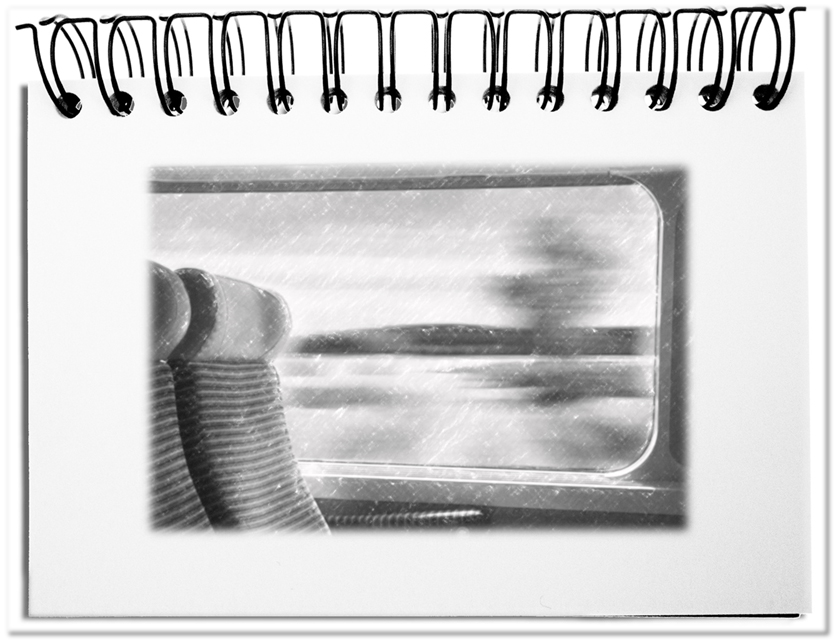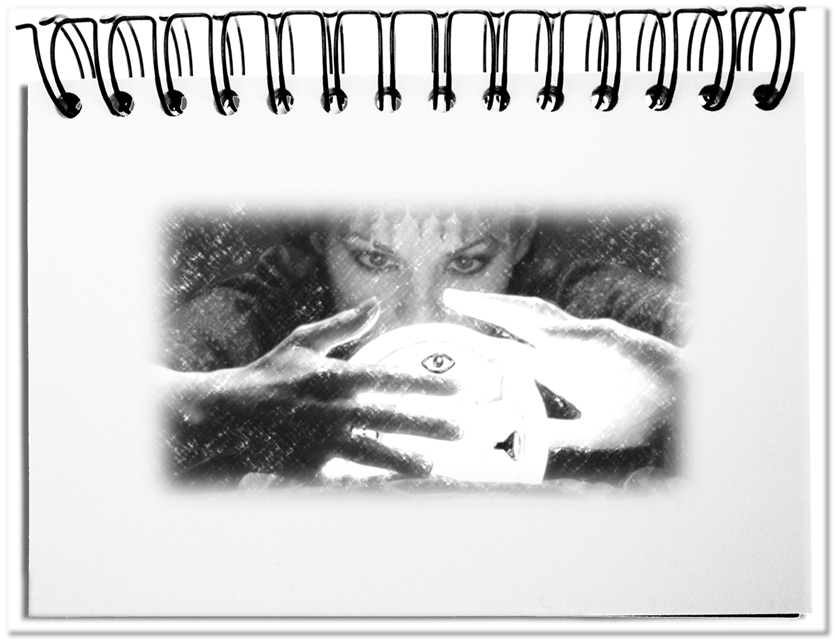Let us forget for the next few minutes that we do not yet understand the phenomenon of time, although we measure it finer and finer – an atomic clock offers one second of deviation in 30 million years. Besides, time can be stretched when we move away from the center of the Earth – two atomic clocks that would have started synchronously 4.5 billion years ago would have a time difference of 39 hours, i.e., the time would have passed faster at the sea level. In everyday life, these differences are not perceived. We roughly divide time in past, present, and future. The vista from a moving train provides a good example of these temporal horizons.
In a train selecting the seat sets the perspective in and against the direction of travel as well as straight out.
- The future
Looking at times to come builds upon a comprehensive collection of data from which we develop scenarios through assumptions and our beliefs. As the future in Western culture is in front of us, it feels like sitting on a moving train and looking in the travel direction. You see distant places ahead, towards which you are moving and passing in the next moment. However, not everything is visible – neither all elements or subtleties nor the future states that will happen later. We anticipate parameters to the best of our knowledge, relate them to each other, and derive plausible futures. The greater the flood of data that evolves, the decision-makers feel more confident by looking into the future. - In contrast to the view out of the train window, the future is invisible because it is still developing. Simulations provide more or less probable futures. However, the reality often builds on upheavals whose dramatic effects no one sees coming – e.g., the introduction of the printing press, the steam engine, the computer, or the Internet. Whereas on the train, we can already foresee what is coming. There is no other chance but to estimate future facts based on preliminary assumptions derived from circumstantial evidence – with a relatively low hit rate. The best way to prepare is to shape what is coming according to your wishes. There is a higher probability that it will be similar.
- The past
The view into the past is full of events that have already taken place. It is like the view from the moving train against the direction of travel. It remains the look back on the already crossed landscape without the slowly disappearing details and conditions. The view into the past behaves similarly. After a short time, a patina is building up covering the objective view, if not makes it impossible. - For this reason, experts deal with the interpretation of the past. Contemporary witnesses and documents provide insights for this purpose. Distorted memories and misinterpreted evidence inevitably lead to historical forgery. With increasing distance, the previous events lose their significance. In the here and now, there is only the memory artificially kept alive of what happened. It is enough to understand the lessons from the past instead of striving for distorted subtleties. The extent to which history plays a role lies in the eye of the beholder – backward-looking, present- or future-oriented. It becomes dangerous when the past is misused to legitimize the present by justifying circumstances, vested interests, and new things.
- The present
The parallel view from the train window resembles the view onto the present. Everything flashes by you. Details blur into an unclear picture. There is no time to process the presence because it is over within a short time. Optical impressions must be 20 to 30 milliseconds apart to recognize something with our senses apart, acoustic sensory impressions three milliseconds apart. To then still perceive the stimuli consciously, we need about 20 to 30 milliseconds, regardless of the type of perception. This floods the present time with a vast amount of data. When the present starts and how long it lasts until it becomes the past is again a personal setting – from a few minutes to hours and days to the current quarter. We can no longer react to today’s VUCA world with lengthy analyses and decision-making processes but with new approaches to collaboration, leadership, and course of education – e.g., more self-organization, from top-down directions to joint decision-making and result monitoring.
Bottom line: Time is intangible. For this reason, everyone creates its own time. Simultaneously, we follow the rhythms of the clock and the calendar. Although, studies of cultures have shown that different regions have different, often contradictory concepts of time. If one considers these divergent lifestyles, then strict time schedules lose their effectiveness. This is especially true for the three time horizons: past, present, and future. Let us make the different views clear to ourselves by looking out of a moving train window. To the front, we sense the future without actually being able to see it yet. To the rear, the present fades away into a past without leaving us any concrete foundations. Looking parallel to the travel direction, we are overwhelmed by the flood of data that rushes in – the faster, the worse. It makes sense to use the respective view’s strengths to work best in the here and now. The sitting direction in the train is the ideal metaphor for the three primary time horizons.


